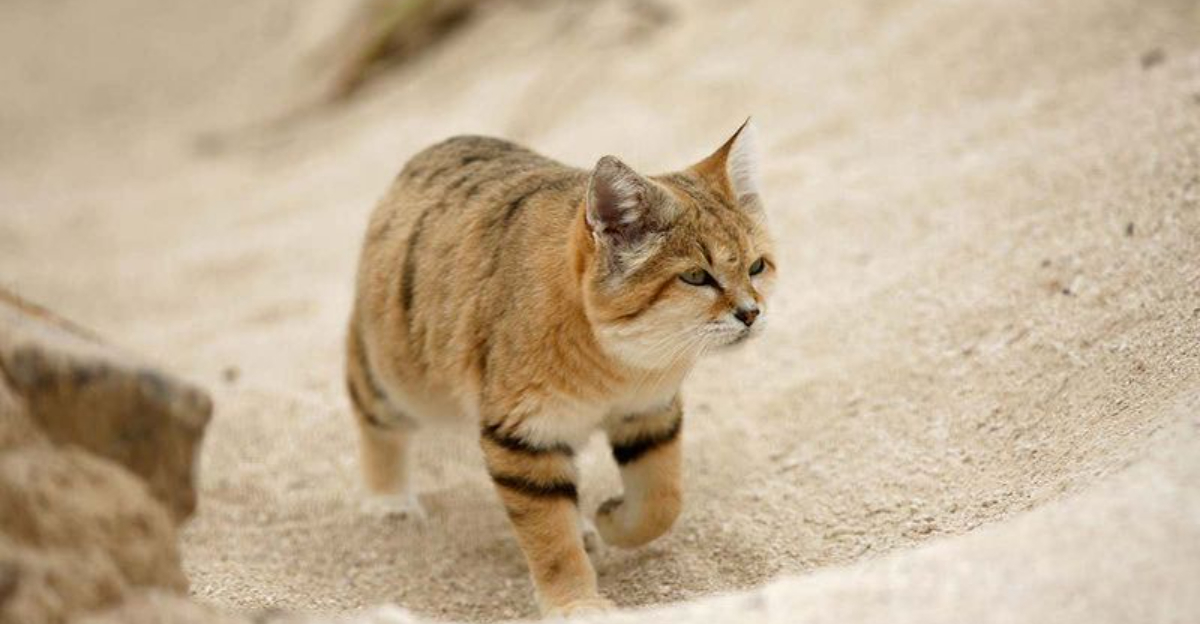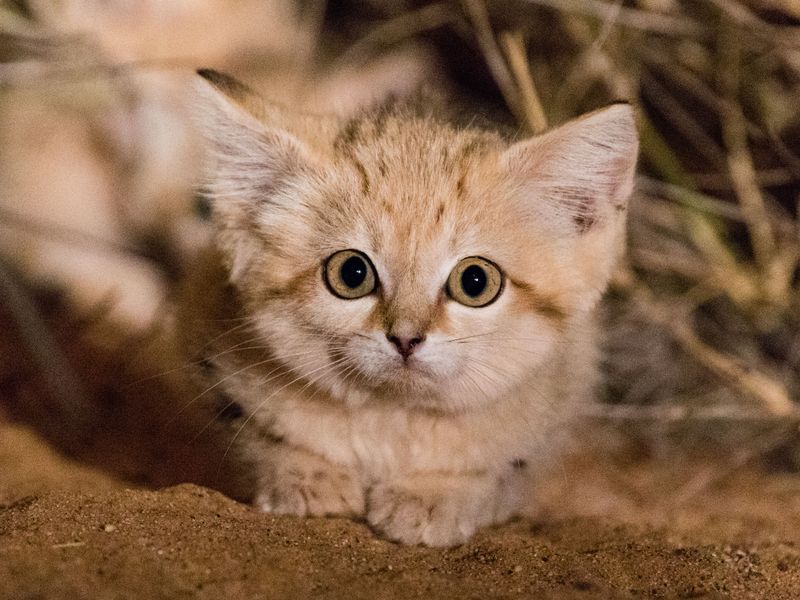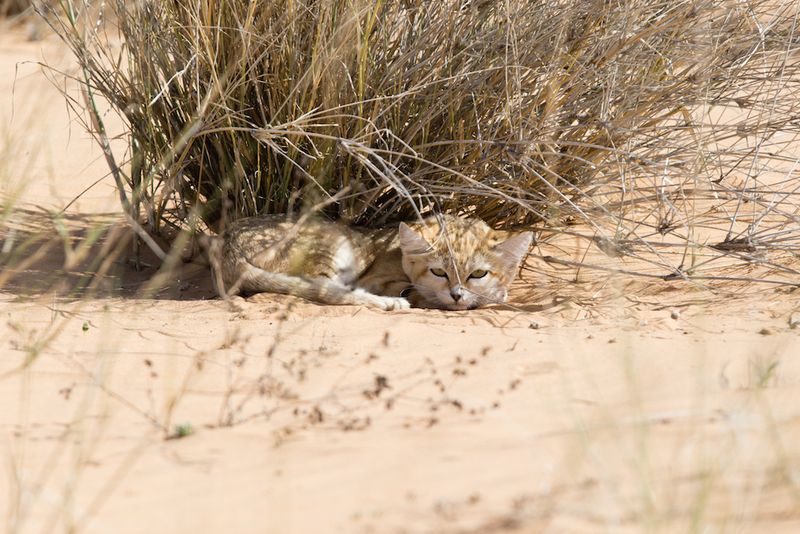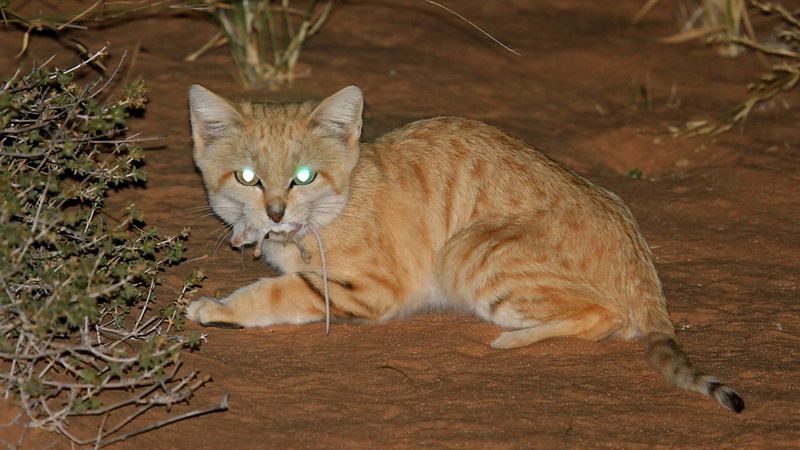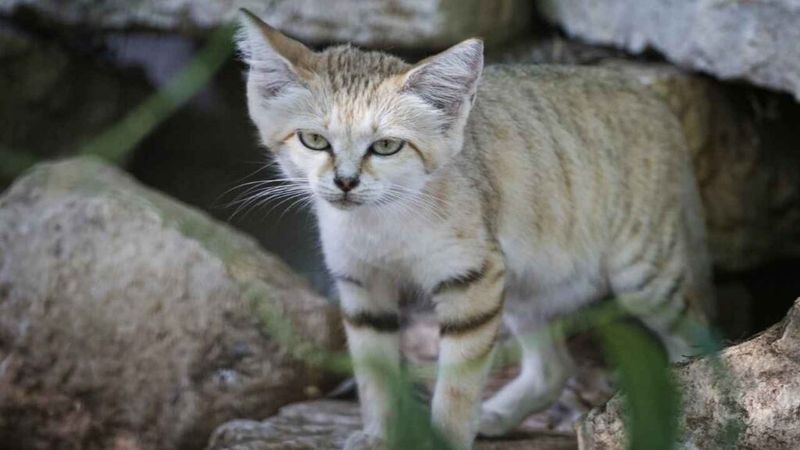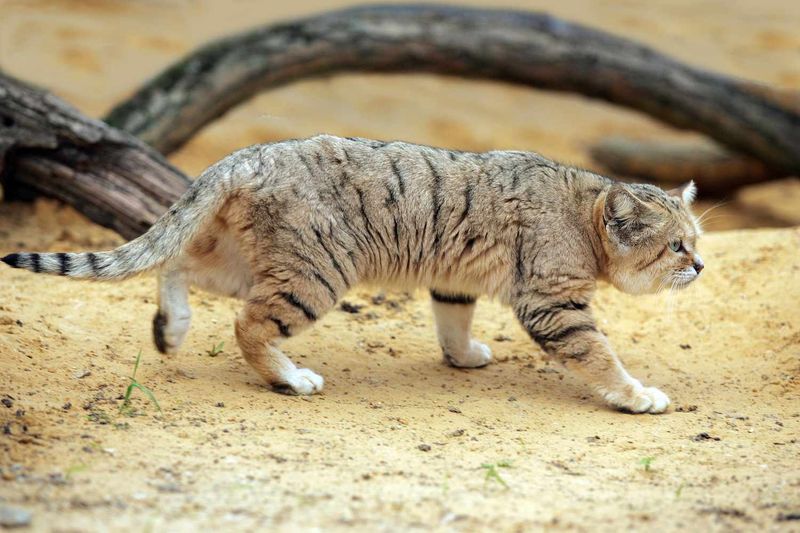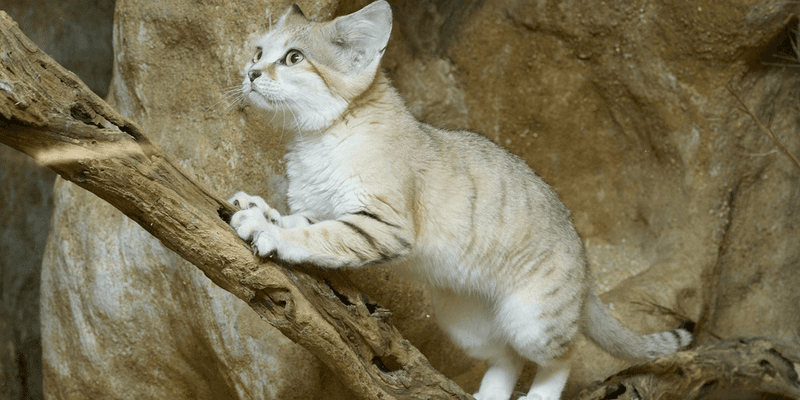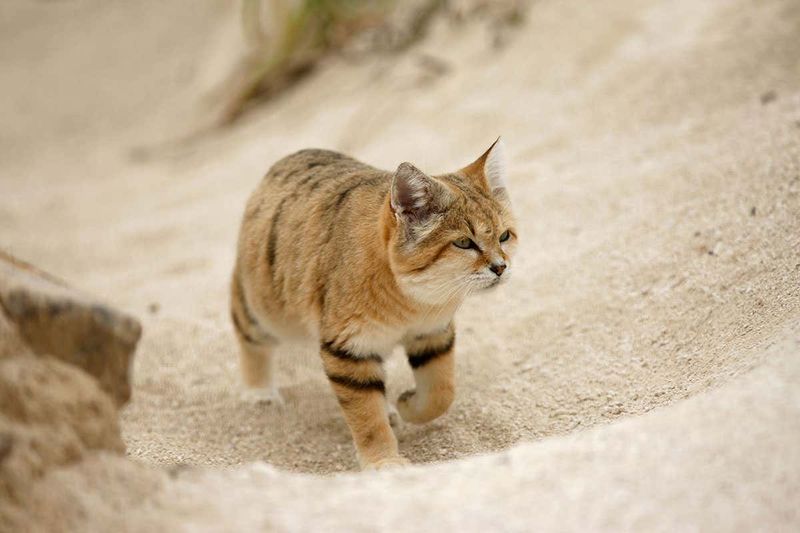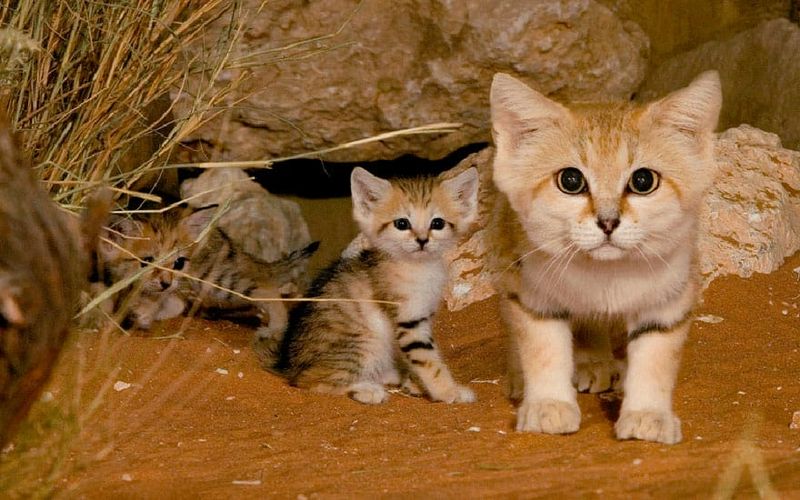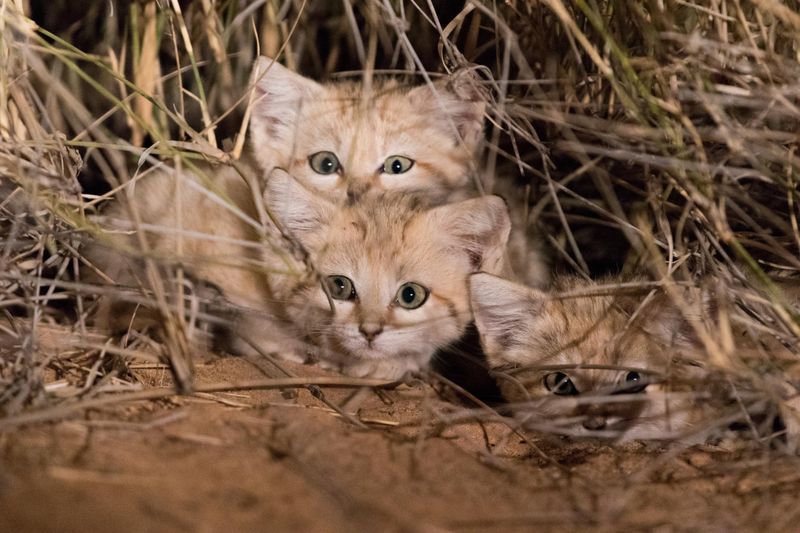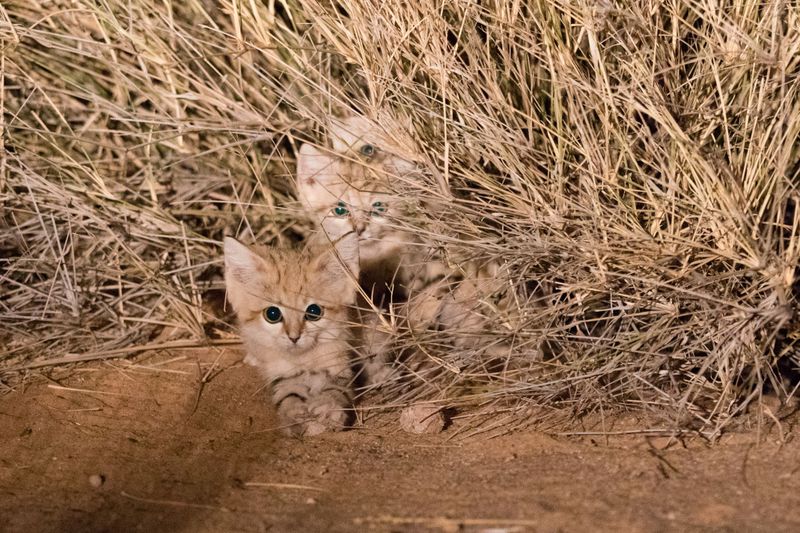📖 Table of Content:
- 1. Extreme Habitat Makes Monitoring Difficult
- 2. Masters of Camouflage
- 3. Nocturnal & Silent Hunters
- 4. Lack of Public Awareness
- 5. Few Long-Term Studies Exist
- 6. Habitat Loss from Desertification & Human Expansion
- 7. Prey Decline Due to Environmental Changes
- 8. They Don’t Adapt Well to Captivity
- 9. Vulnerable to Disease from Domestic Animals
- 10. Conservation Status Often Overlooked
In the heart of the world’s harshest deserts, beneath moonlit dunes and scorching sands, lives one of nature’s most enigmatic creatures: the Saharan sand cat. With oversized ears, fluffy paws, and a perfectly camouflaged coat, this elusive feline has adapted beautifully to a life few animals can endure. Yet despite its incredible resilience, the Saharan sand cat remains one of the least understood and most overlooked wild cats on the planet.
While their appearance may evoke curiosity or even affection, sand cats face a unique set of threats that quietly endanger their survival. Unlike larger or more charismatic big cats, they often slip under the radar of both conservationists and the general public. They don’t make headlines, don’t feature in high-profile documentaries, and rarely appear in wildlife campaigns — a silence that masks a growing crisis.
This article sheds light on the 10 ways these desert specialists are endangered in ways that are both distinct and dangerously under-recognized. From habitat loss to the challenges of scientific monitoring, these issues reveal how easily a species can vanish when the world isn’t watching — and why the sand cat deserves a place in the broader conversation about wildlife protection.
1. Extreme Habitat Makes Monitoring Difficult
Tucked away in some of the most remote parts of the Sahara, sand cats live in a realm where few humans dare venture. The sheer vastness and inhospitable nature of their environment make long-term studies nearly impossible. Without access to stable roads or reliable equipment, researchers often abandon attempts to monitor them. In turn, this isolation leads to a critical lack of data on population trends. When we don’t know how many remain or where they thrive, how can we protect them? Their habitat, while seemingly untouched, shields them from visibility in both literal and conservation senses. As a result, they are often forgotten in global wildlife preservation efforts.
2. Masters of Camouflage
With coats that blend seamlessly into the sandy dunes, Saharan sand cats are desert ghosts. Their fur not only protects them from predators but also makes them nearly invisible to humans. Even in daylight, spotting one is akin to finding a needle in a haystack. This evolutionary advantage, while critical for survival, also works against them in conservation. The less we see them, the less we understand them. Without visuals or public footage, they fail to captivate popular imagination. Hence, their camouflage ironically renders them invisible in both nature and public awareness.
3. Nocturnal & Silent Hunters
Only emerging after the sun has set, Saharan sand cats live in a world we rarely witness. By night, they prowl silently on tufted feet that leave no tracks across the sand. Even their vocalizations are rare and barely audible to human ears. This nocturnal invisibility makes observing their natural behavior incredibly difficult. Scientists relying on camera traps or night-vision technology often come up empty-handed. And without meaningful behavioral data, it’s hard to craft conservation strategies. Consequently, they remain one of the least-documented feline species in the wild.
4. Lack of Public Awareness
Public sympathy often drives conservation funding, but the sand cat hasn’t captured hearts like the tiger or panda. Because they live far from human civilization and aren’t flashy in appearance, they rarely make headlines. Educational campaigns and media seldom feature them. Zoos and documentaries tend to overlook small, desert-dwelling species in favor of dramatic savannah scenes or jungle chases. As a result, most people don’t even know these animals exist. When a species lacks a fanbase, it struggles to gain support or funding. Awareness is a powerful tool they’ve yet to benefit from.
5. Few Long-Term Studies Exist
Historically, research on sand cats has been sporadic and geographically limited. Funding for long-term studies in desert ecosystems is hard to secure. This has led to vast gaps in our understanding of their reproductive patterns, migration routes, and population stability. The absence of continuous data means conservationists are operating with guesswork rather than evidence. Without numbers or case studies, it’s difficult to advocate for protection policies. Scientific journals reflect this absence, with only a handful of published papers in recent decades. Their story is one left mostly unwritten by science.
6. Habitat Loss from Desertification & Human Expansion
Deserts may seem like untouched wilderness, but they are under threat from multiple fronts. Human infrastructure like roads, oil drills, and settlements are carving up previously uninterrupted sand cat territory. In parallel, overgrazing by livestock depletes the ecosystem’s balance. Climate change is accelerating desertification in some areas while shrinking viable hunting grounds in others. These gradual changes are seldom tracked in desert regions, making them even more insidious. Unlike rainforests, which garner global outcry, damaged deserts receive little attention. The sand cat’s home is vanishing quietly — and so might the cat itself.
7. Prey Decline Due to Environmental Changes
Rodents, birds, and lizards — these are the core diet of the Saharan sand cat. But their prey is disappearing due to environmental stressors like drought, pesticide use, and overhunting by humans. Food scarcity forces sand cats to expand their range or starve. As prey populations fluctuate wildly, so too does the stability of the sand cat population. This dietary vulnerability isn’t often discussed, but it’s foundational to their survival. A predator without prey is a ticking clock. Conservation must begin at the base of the food chain, not just the apex.
8. They Don’t Adapt Well to Captivity
Captive breeding has saved many species — but not the sand cat. In zoos, these animals often experience stress, low fertility, and high kitten mortality rates. Their sensitive physiology doesn’t take well to artificial lighting, limited space, or altered diets. Even in the best environments, few sand cats live as long or as healthily as their wild counterparts. Because of these challenges, there are only a handful of sand cats in captivity worldwide. This means there’s no “backup population” if wild numbers crash. Their conservation future must happen in the wild, or not at all.
9. Vulnerable to Disease from Domestic Animals
Stray dogs and cats roam closer and closer to desert edges, bringing unseen dangers with them. Diseases like feline leukemia, rabies, and toxoplasmosis spread quickly and can devastate fragile wild populations. Sand cats, with limited immune defenses against these foreign pathogens, are at severe risk. Infections often go undetected in the wild, meaning outbreaks may be happening right now, unnoticed. The rise in tourism and human settlements in North Africa only worsens the problem. While the threat is silent, its consequences could be catastrophic. Disease, once introduced, is nearly impossible to reverse in the wild.
10. Conservation Status Often Overlooked
The International Union for Conservation of Nature (IUCN) lists the Saharan sand cat as “Least Concern.” But that designation rests on outdated, sparse data from years ago. It doesn’t reflect current threats like habitat loss or prey decline. Policymakers rely on such classifications to allocate resources — and “Least Concern” species are usually left behind. Because of this mislabeling, sand cats miss out on crucial protections and funding. Many conservationists argue they should be reassessed urgently. Until then, they remain endangered in reality but not in name.
